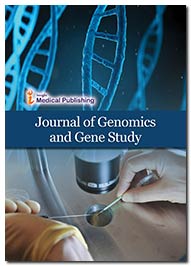Pathways towards and away from Alzheimer's disease
Abstract
To maintain normal tissue homeostasis in organisms a programmed cell death take place known as apoptosis. The number of cells in an organism is regulated by turnover of cells by cell renewal and also cell aging/death. Genes and/or proteins control apoptosis and this process needs energy in ATP form (Adenosine Triphosphate). Bcl-2 (B-cell lymphoma 2) family of protein is one of the main classes of protein controlling the process of apoptosis. Pro-apoptotic (apoptotic inducer) and anti-apoptotic (apoptotic inhibitory) proteins are included in Bcl-2 proteins. Bax and Bak are pro-apoptotic proteins while Bcl-2 and Bcl-xL (B-cell lymphoma-extra-large) are anti-apoptotic proteins. No cell division occurs after the cell has undergone mitosis. This signifies that apoptosis is not required in all cells. Cells of the Central Nervous System (CNS) are naturally programmed against apoptosis. When the cells of CNS undergo apoptosis, neuronal cells are degenerated, Alzheimer’s disease is caused. Bax proteins are used to stimulate apoptosis in yeast cells, Saccharomyces cerevisiae. GAL promoter (upstream of the Bax gene at 5’ end of the gene), synthetic Bax gene and transcription terminator (at the 3’ end of the gene) make up the Bax expression cassette. Galactose helps induce the GAL promoter whereas glucose represses it expression. A yeast-biased codon is used for chemical synthesis of Bax gene, for achieving highest level of expression of the human Bax protein because yeast favors these codons. The expression cassette of the Bax gene instead of the plasmid is integrated by the yeast chromosomes. If the expression cassette integrates the plasmid, it will become unstable. The Bax-gene bearing plasmid can be expelled by the yeast. A genomic chromosome is essential for the survival of a cell, a plasmid not so much. Only one out of the 17 chromosomes in yeast cell integrates the Bax expression cassette. Cell can easily remove an integrated plasmid in comparison to genomic chromosome. Chromosomes are crucial for the survival of yeast cell, each one of them. By using integrated chromosome instead of plasmid, a more stable cellular copy of the Bax expression cassette. For inserting the Bax expression cassette through yeast genomic chromosome the homologous is employed. On successful completion of the integration a new strain of yeast having Bax expression cassette is produced. A plasmid containing one of the Bcl-2 expression cassette or a Bcl-xL expression cassette is used for transforming the strain.
Open Access Journals
- Aquaculture & Veterinary Science
- Chemistry & Chemical Sciences
- Clinical Sciences
- Engineering
- General Science
- Genetics & Molecular Biology
- Health Care & Nursing
- Immunology & Microbiology
- Materials Science
- Mathematics & Physics
- Medical Sciences
- Neurology & Psychiatry
- Oncology & Cancer Science
- Pharmaceutical Sciences
